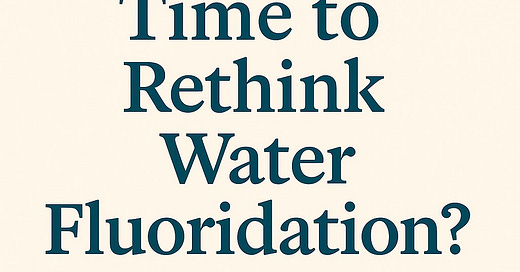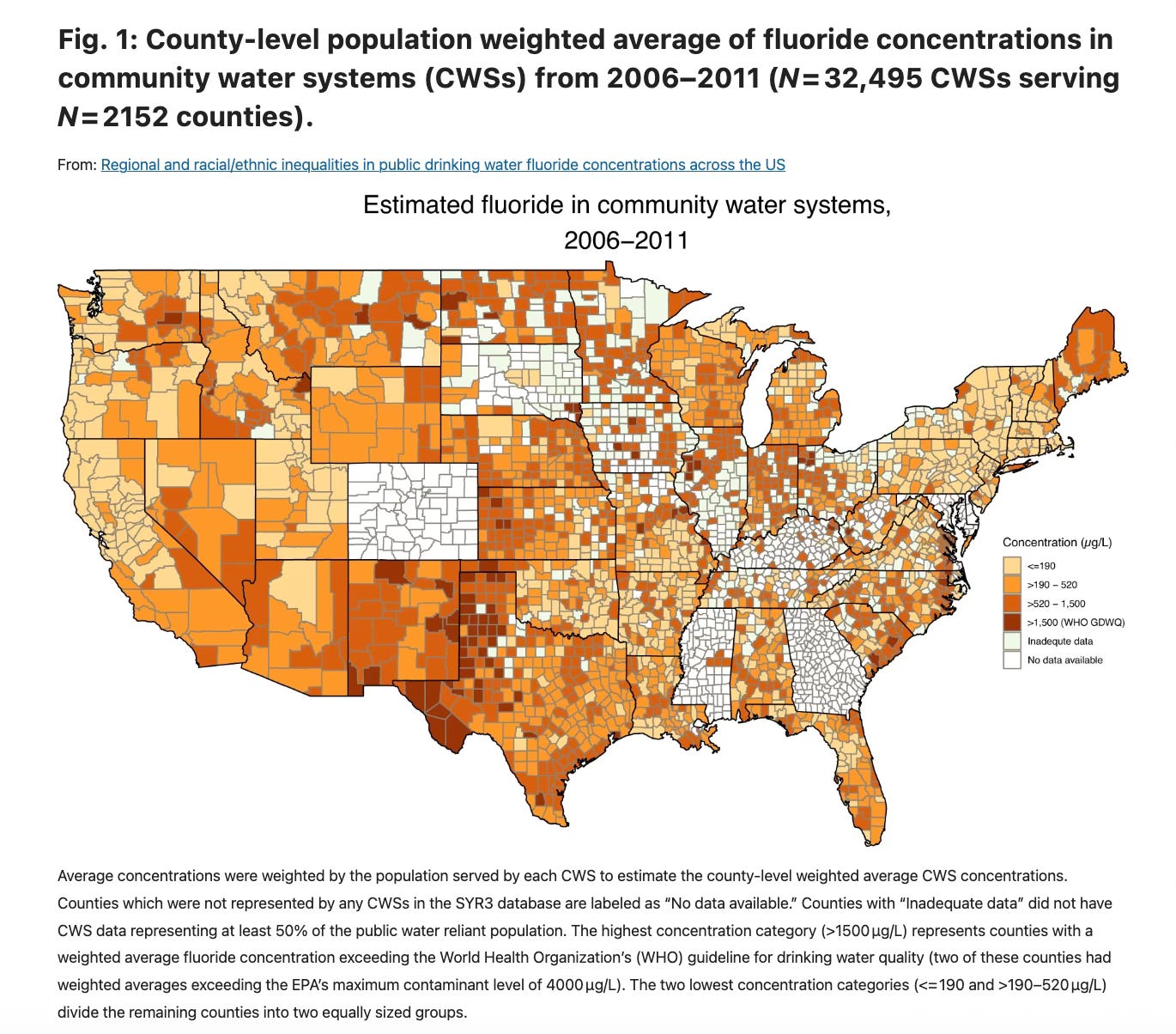A powerful new commentary by two leading environmental health scientists, Dr. Howard Hu, and Dr. Linda Birnbaum, provides a scientific summary of the current debate about fluoride in drinking water. Their message is: it’s time to reevaluate old assumptions, especially when it comes to the health of our youngest and most vulnerable.
Dr. Hu is a physician-scientist and founding dean emeritus of the Dalla Lana School of Public Health at the University of Toronto. Dr. Birnbaum is the former director of the National Institute of Environmental Health Sciences and a widely respected voice on environmental risk.
Their article, just published in the American Journal of Public Health1 presents a summary of the current science around water fluoridation: while fluoride was once hailed as a public health triumph for fighting tooth decay, modern science is revealing a troubling link between fluoride exposure and developmental harm in children, especially during pregnancy. Current studies show a connection between fluoride exposure and lower IQ and behavioral changes.
⚖️ A Legal Turning Point
In September 2024, a federal court ruled that:
the current national standard of 0.7 milligrams per liter (mg/L) of fluoride in drinking water “presents an unreasonable risk of injury to health.”2
This decision followed years of litigation and scientific testimony, culminating in the release of a major National Toxicology Program (NTP) report, which found that even modest fluoride levels are consistently associated with reduced IQ in children.
The court decision arrived just as Robert F. Kennedy Jr., long critical of water fluoridation, was confirmed as the new U.S. Secretary of Health and Human Services.
What the Research Shows
While fluoride can prevent tooth decay, especially through direct contact with teeth (as in toothpaste or mouth rinses), the science behind ingesting it, particularly during pregnancy, is growing more concerning.
Among the findings Hu and Birnbaum1 highlight:
A loss of 1.7 to 2 IQ points in children has been linked to every 1 mg/L increase in maternal urinary fluoride.
Prenatal fluoride exposure correlates with increased anxiety and behavioral challenges.
Fluoride’s biological mechanisms suggest it may disrupt brain development via oxidative stress, thyroid dysfunction, and neurotransmitter disruption.
Why Are We Still Adding It to Water?
Fluoride’s benefits for dental health were established in the 1940s and '50s when sugar consumption skyrocketed and tooth decay soared. Some attribute recent gains in dental health to topical fluorides, like toothpaste and sealants, not from systemic exposure.
🧬 Vulnerability Varies
People vary widely in their biology and circumstances; some are more vulnerable to chemical and environmental exposures than others. Emerging science suggests that some people may be more vulnerable to fluoride’s effects due to genetics. And given that the US Environmental Protection Agency (EPA) is mandated to set health standards that protect the most susceptible populations, the authors argue that the current fluoride limit of 4 mg/L is far from protective.
What Can We Do?
More research is urgently needed to understand the factors that make certain individuals more susceptible to the health effects of fluoride exposure. From a policy standpoint, the EPA is required to set standards that include a margin of safety, something not currently achieved with the agency’s outdated regulatory limit of 4 mg/L. I agree with Hu and Birnbaum, who call for:
Expanded research on low-level fluoride exposure and neurodevelopment
Identification of vulnerable populations
A reexamination of how fluoride is delivered, prioritizing topical over systemic methods
Immediate steps to minimize prenatal and infant fluoride exposure
Instead of applying a one-size-fits-all approach by fluoridating public water supplies, a more targeted strategy, such as fluoride toothpaste, gels, or mouth rinses, could deliver dental benefits while reducing systemic risks, especially for those most vulnerable. Now that we have clear evidence of harm, public health policy must evolve to reflect what science is telling us and protect future generations accordingly.
References
Howard Hu and Linda Birnbaum. Fluoride, Teeth, and Developing Brains: Dental Health in Tension With Environmental Health, Millions Affected American Journal of Public Health 115, 1022_1024, https://doi.org/10.2105/AJPH.2025.308166
Food & Water Watch Inc v United States EPA, No. 17-cv-02162-EMC, 2024 US Dist, LEXIS 172635 (ND Cal; September 24, 2024)
Hefferon, R., Goin, D.E., Sarnat, J.A. et al. Regional and racial/ethnic inequalities in public drinking water fluoride concentrations across the US. J Expo Sci Environ Epidemiol 34, 68–76 (2024). https://doi.org/10.1038/s41370-023-00570-w
Mindi Messmer, MS, PG, CG is an environmental and public health scientist and author of Female Disruptors: Stories of Mighty Female Scientists. The book is available on Amazon, Barnes & Noble and through your local bookstore.






I was born in the early 70s and when I was a baby my parents briefly lived in Arkansas where apparently there is quite a bit of fluoride in the water.
My adult teeth came with horrible orange and brown stains. You can’t bleach them because it’s INSIDE the tooth. I was bullied all through school until seventh grade when I could get composite bonding put on them so you couldn’t see the stains anymore, but I was still bullied until we moved to Concord where nobody knew I had orange and brown teeth.
Back in the 80s it was about $50 a tooth, the last time one chipped and I had to have it get redone I had to pay $500 for one tooth. I’m so tired of having to drop $500 every couple years on this tooth I asked my dentist to pull it out and give me an implant but he wouldn’t.
I’m in my 50s and I’m still mad about it. And I feel terrible for my mom because I blamed her as a child since at the time the theory was that she took antibiotics or had a fever while she was pregnant. It wasn’t until recently that I realized it was the Arkansas water.
Nobody should have to go through what I went through and there’s no reason to dose everyone with fluoride when we can buy it in our toothpaste and mouthwash now.